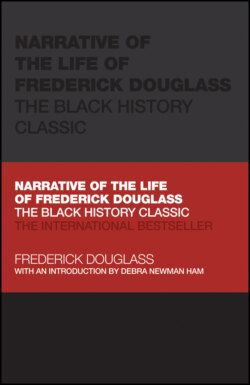Читать книгу Narrative of the Life of Frederick Douglass - Frederick Douglass - Страница 12
WRITER AND SPEAKER
ОглавлениеDouglass quietly began to attend antislavery meetings. Then, in 1841, spurred by the inaccurate, sometimes even ridiculous representations of Southern slavery, he spoke for the first time as a former slave and an eyewitness of numerous atrocities. Thus commenced his career, encouraged by Garrison and others, as an abolitionist orator.
As a tall, mahogany-skinned man with a resonant baritone voice and a lion's mane of hair, he was such an impressive speaker that his mostly white audiences found it unbelievable that he had ever been a slave at all. Because of the enforced ignorance of blacks, many whites assumed that slaves were not teachable. Pseudo-scientific ideas about race abounded, none of which were complimentary to descendants of Africa, free or enslaved.
Douglass went on a speaking tour around the Eastern and Midwestern states of America organized by the Anti-Slavery Society. At some events he was jostled and injured by defenders of slavery, and publicity led to threats of further harm and kidnapping.
Some slave narratives had been ghostwritten, so to prove his authenticity Douglass set out to write his Narrative entirely by his own hand. Published in Boston in 1845 by William Lloyd Garrison, its initial print run of 5,000 copies sold in four months, and further printings soon followed.
Douglass's champion, abolitionist William Lloyd Garrison. Engraving from 1879 newspaper
His first trip abroad, in 1845, was a two-year lecture tour of England and Ireland, where he was constantly amazed to be treated as an equal to white people. In My Bondage and My Freedom, he recalls:
I gaze around in vain for one who will question my equal humanity, claim me as his slave, or offer me an insult. I employ a cab – I am seated beside white people – I reach the hotel – I enter the same door – I am shown into the same parlour – I dine at the same table – and no one is offended … I find myself regarded and treated at every turn with the kindness and deference paid to white people. When I go to church, I am met by no upturned nose and scornful lip to tell me, ‘We don't allow niggers in here!’
The talks helped the Narrative become popular in Ireland and England, with five editions produced there between 1846 and 1847. After returning to America, he began publishing an abolitionist newspaper, The North Star. He also published a fictionalized account of a slave's life, The Heroic Slave (1852).
The expectation had been that Douglass would simply tell the story of what had happened to him, but as his reading became wider he began speaking and writing on matters of politics and political philosophy. He noted in a talk in New York in 1847, “I have no love for America, as such; I have no patriotism. I have no country. What country have I? The Institutions of this Country do not know me – do not recognize me as a man.”
The Narrative is the first of three autobiographical works, including My Bondage and My Freedom (1855) and Life and Times of Frederick Douglass (1881, revised 1892). As well as a glowing preface by William Lloyd Garrison, it was endorsed by prominent abolitionist Wendell Phillips. All three autobiographies were bestsellers at home and abroad and were a significant source of income for Douglass.
The backlash to Narrative was considerable. Runaways like Douglass could be recaptured anytime. Owners published their slaves’ descriptions in newspapers and often offered generous rewards for their return. Secrecy was the byword for the fugitives. Nevertheless, Douglass wrote his autobiography revealing his past in detail. He provided particulars about the names and places of his owners, his birthplace, and his work on farms and in Baltimore City.
Douglass in his early thirties, after publication of the Narrative. Photograph by Samuel J. Miller
After he published the Narrative in his late twenties, he knew he was in danger of being recaptured. In 1846, he was able to secure funds from British abolitionists to formally purchase his freedom (at a cost of $711). Britain had passed the Slavery Abolition Act in 1833.
